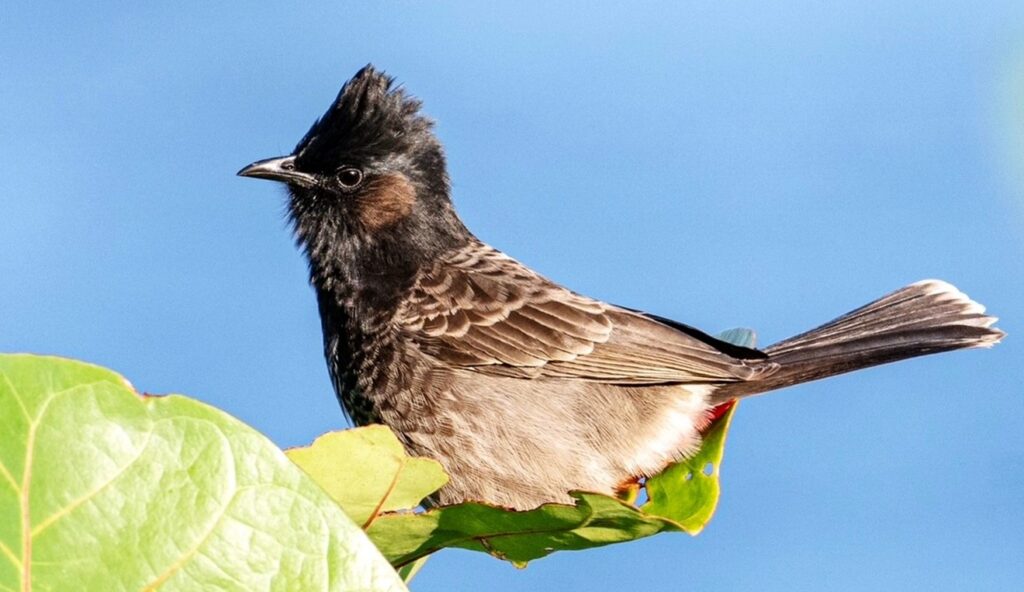
Red rears and red whiskers: It’s bulbul time
/ Bird News, General Updates / By
Susan Scott
12 things we want to share about Bulbuls
- Hawaiʻi’s two bulbuls, Red-vented and Red-whiskered, are native to India and Southeast Asia.
- Both species appeared on Oʻahu in the mid-1960s, the result of cage releases. Bulbuls were then (and still are) on Hawaiʻi’s list of birds prohibited from import.
- In 1966 and 1967, Oʻahu’s first wild Red-vented Bulbuls were reported within eight months in four widely-spaced parts of the island. Because bulbuls tend to stay in one area, it’s thought these were multiple releases.
- Red-whiskered Bulbuls escaped from two Honolulu aviaries in the mid 1960s. The first wild individual was seen in Makiki Heights in 1965.
- A few Red-vented Bulbul strays have been reported on Kauaʻi, Molokaʻi, Kahoʻolawe, and Hawaiʻi Island, but have no breeding populations there (so far.)
- Red-whiskered Bulbuls are found only on Oʻahu (so far.)
- Bulbuls eat insects, but also have an unfortunate (for farmers) fondness for fruit and flowers, particularly orchid buds.
- Despite being an agricultural pest, bulbuls are popular cage birds that have been introduced throughout the world.
- Red-vented Bulbuls have been introduced to Fiji, Samoa, Tonga, Tahiti, New Zealand, New Caledonia, Kuwait, Qatar, United Arab Emirates, and Oman.
- Red-whiskered Bulbuls have been introduced to Saudi Arabia, United Arab Emirates, Oman, Borneo, Spain, Canary Islands, Miami, and Los Angeles.
- The word bulbul is Persian that also means nightingale, an unrelated bird known for its bubbly song.
- The bulbul family (Pycnonotidae) has 161 species ranging throughout southern Asia and Africa.

Red-vented Bulbul by Mike Carion
Top photo: Red-whiskered bulbul by Eric VanderWerf
